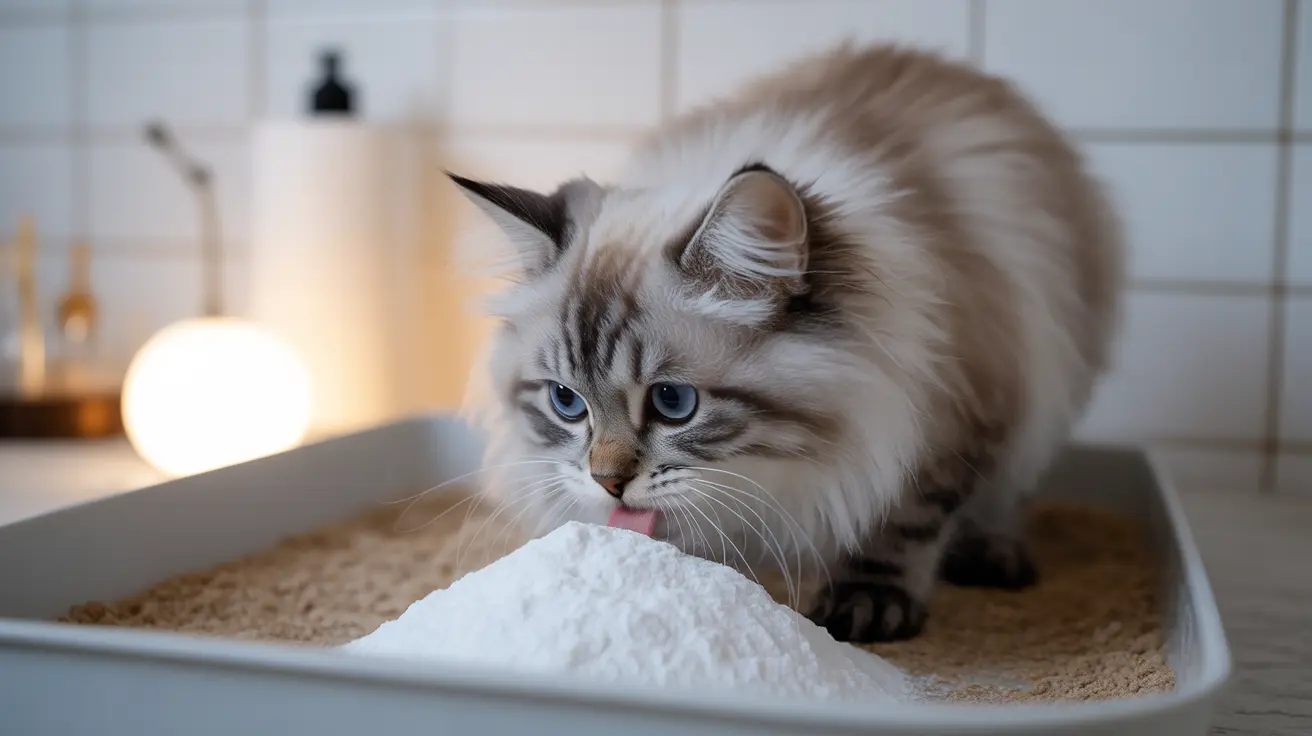Many cat owners struggle with litter box odors and wonder about using common household items as a solution. One frequently asked question is whether baking soda can be safely added to cat litter. While this pantry staple may seem like an easy fix, there are important factors to consider before sprinkling it in your cat's litter box.
In this comprehensive guide, we'll explore the safety, effectiveness, and proper usage of baking soda in cat litter, helping you make an informed decision for your feline friend's well-being.
How Baking Soda Works in Cat Litter
Baking soda (sodium bicarbonate) works as a natural deodorizer by neutralizing acidic odors in cat litter. Its alkaline nature helps absorb and eliminate unpleasant smells rather than simply masking them. The substance also helps control moisture, which can contribute to better odor management.
However, it's important to understand that baking soda's effectiveness depends largely on proper application and usage amounts. Too much can actually create more problems than it solves.
Benefits of Adding Baking Soda to Cat Litter
When used correctly, baking soda offers several advantages:
- Natural odor neutralization
- Cost-effective solution
- Easy availability
- Simple application process
- No artificial fragrances
Potential Risks and Safety Concerns
Despite its benefits, there are several important safety considerations when using baking soda in cat litter:
Respiratory Issues
Cats with respiratory conditions like asthma may experience irritation from baking soda dust. The fine particles can trigger breathing difficulties or worsen existing conditions.
pH Balance Concerns
Most commercial cat litters already have an optimal pH level. Adding baking soda can create an overly alkaline environment, potentially leading to increased ammonia release from urine.
Ingestion Risks
Cats may accidentally ingest small amounts while grooming their paws. While not typically toxic in small quantities, it can cause digestive upset.
Proper Usage Guidelines
If you decide to use baking soda in your cat's litter, follow these best practices:
- Use only a light sprinkle (1-2 tablespoons per box)
- Add it to the bottom of the box before adding litter
- Monitor your cat for any adverse reactions
- Maintain regular cleaning schedules
- Replace litter completely every 2-3 weeks
Alternative Solutions for Odor Control
Consider these alternatives if baking soda isn't the right choice for your situation:
- Commercial cat litter deodorizers
- Activated charcoal filters
- More frequent litter box cleaning
- Multiple litter boxes
- Natural enzyme cleaners
Frequently Asked Questions
Is baking soda safe to put in cat litter for odor control, and what are the risks?
Baking soda is generally safe when used in moderation, but risks include respiratory irritation, potential pH imbalances, and digestive issues if ingested. It's best to use minimal amounts and monitor your cat's reaction.
How much baking soda should I add to my cat's litter box to help with smells?
Use no more than 1-2 tablespoons per standard-sized litter box. Sprinkle it thinly at the bottom of the box before adding fresh litter.
Can baking soda in cat litter cause health problems for my cat, like breathing or stomach issues?
Yes, excessive baking soda can cause respiratory irritation, especially in cats with asthma or sensitivities. If ingested during grooming, it may cause stomach upset or diarrhea.
What are the best alternatives to baking soda for controlling litter box odor naturally?
Effective alternatives include activated charcoal, enzyme cleaners, more frequent cleaning, and specialized odor-control litters. Multiple litter boxes can also help manage odors better.
How often should I clean my cat's litter box if I use baking soda for odor control?
Clean the litter box daily regardless of baking soda use. Completely replace litter and wash the box every 2-3 weeks, or more frequently if needed.
Conclusion
While baking soda can be a helpful tool for managing litter box odors, it's crucial to use it cautiously and monitor your cat's response. The best approach is to combine minimal baking soda use with regular cleaning habits and proper litter box maintenance. If you notice any adverse reactions in your cat, discontinue use and consult your veterinarian for personalized advice.






